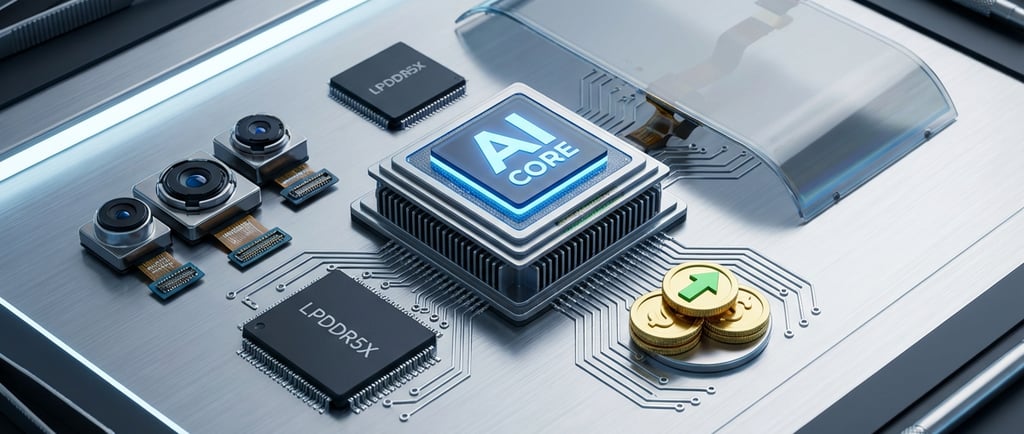Xiaomi President Confirms: Why Your Next Smartphone Will Cost More in 2026
The era of the affordable "flagship killer" is evolving. Xiaomi's leadership has warned that due to rising chip costs and advanced manufacturing, consumers must prepare to pay a premium for the 2026 lineup. Here is why.
MOBILE TECHNOLOGYANDROID NEWSSUPPLY CHAINCULTURE


Xiaomi: President Announces Smartphone Prices Will Rise in 2026
The days of aggressively priced flagship smartphones may be coming to an end. In a candid address that has rippled through the tech industry, Xiaomi’s President has officially confirmed that consumers should expect a noticeable price increase for the brand’s 2026 smartphone lineup.
While Xiaomi built its empire on the philosophy of "honest pricing," the economic realities of next-generation technology are forcing a strategic pivot. Here is a detailed breakdown of why your next phone will be more expensive and what is driving this decision.
The Official Announcement: Ending the Speculation
Rumors had been circulating for months regarding the rising costs of manufacturing, but the official confirmation came directly from Xiaomi's leadership during a recent media briefing. The message was clear: the price stability seen in previous years is no longer sustainable for the upcoming generation of high-end devices.
The executive noted that while Xiaomi aims to keep profit margins on hardware low (famously capped at 5%), the raw "Bill of Materials" (BOM) has skyrocketed. To maintain the quality and performance users expect, the retail price must be adjusted upward.
The Primary Culprit: The Cost of Silicon
The single biggest factor driving this price hike is the processor. As we head into 2026, the industry is shifting toward 3nm and 2nm manufacturing processes for System-on-Chips (SoCs), such as the next-generation Qualcomm Snapdragon and MediaTek Dimensity chipsets.
TSMC (Taiwan Semiconductor Manufacturing Company), which produces these advanced chips, has increased its wafer prices. Consequently, the cost for Xiaomi to procure the "engine" of the phone has jumped significantly. Industry analysts estimate that the processor alone could cost 20% to 30% more than previous generations. Since the processor is the most expensive single component in a phone, this cost is inevitably passed down to the consumer.
Memory and Screen Technology
It is not just the processor that is getting more expensive; the supporting components are seeing inflation as well.
RAM and Storage: The prices of DRAM and NAND Flash storage have entered a cyclical upswing. With apps and AI requiring more fast memory (12GB or 16GB is becoming the standard minimum), manufacturers cannot cut corners here without sacrificing performance.
Display Panels: The push for brighter, more energy-efficient LTPO OLED panels creates another cost pressure. As users demand higher peak brightness (now routinely exceeding 3000 nits) and tougher glass protection, the screen assembly becomes a premium expenditure.
The "AI Premium" and R&D
Xiaomi is heavily investing in its "Human x Car x Home" ecosystem, with a massive focus on Artificial Intelligence.
Integrating on-device Generative AI requires not just powerful hardware, but immense Research and Development (R&D) spending. The 2026 lineup is expected to feature deeply integrated AI assistants that work offline. This software capability requires specialized NPU (Neural Processing Unit) architecture and costly licensing or development of Large Language Models (LLMs), adding a hidden "AI Tax" to the final device price.
What This Means for the Consumer
For the loyal Xiaomi fan, this signals a shift in expectations. The 2026 flagship series (potentially the Xiaomi 16 Ultra or Xiaomi 17 series) will likely position itself as a direct, premium competitor to the iPhone Pro and Samsung Galaxy S Ultra ranges, rather than a cheaper alternative.
However, this also implies that Xiaomi’s sub-brands, such as Redmi and POCO, will become even more critical. As the main Xiaomi line moves upmarket into luxury territory, these sub-brands will likely be the last bastion for users seeking high performance at a mid-range price point.
Conclusion
The price hike is not unique to Xiaomi; it is an industry-wide trend. However, Xiaomi’s transparency in announcing it early sets the stage for a new era. In 2026, we will be paying more for our smartphones, but in return, we are promised devices that rival desktop computers in power and serve as the central hub for our AI-driven lives.
Sources
Global Semiconductor Industry Outlook 2025-2026 (TrendForce Analysis).
Xiaomi Corporate Press Release & Earnings Call Transcripts (Q3 2025).
Qualcomm Snapdragon Summit Keynote Highlights.
Nikkei Asia: Tech Supply Chain and Component Pricing Reports.


